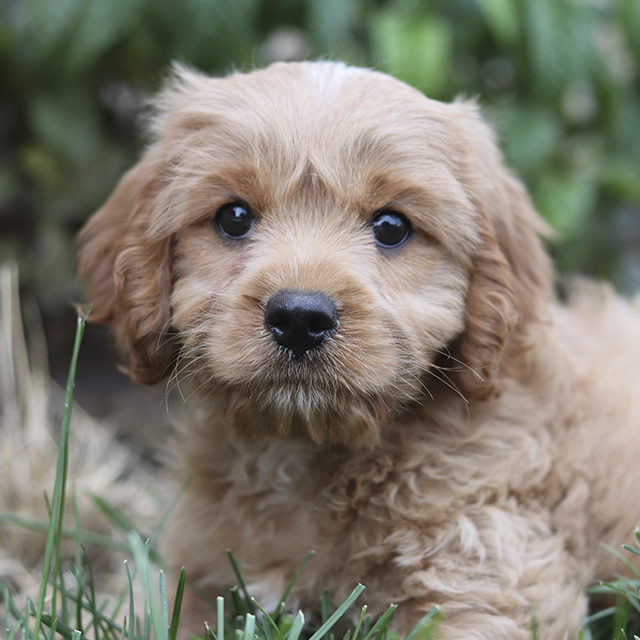Find products that match your dog’s needs

Photo by Mia Anderson on Unsplash
Fostering puppies is a really special and rewarding thing to do, but it doesn’t come without its challenges. These cheeky little critters are young and inexperienced in the world, so they’re relying on you to teach them the ropes. From helping them settle into a new home to providing them with essential training, you’ll play an important role in shaping their behaviour and temperament, so they’re ready to shine in their forever home.
Properly preparing for your foster puppy before they arrive is a great place to start in helping them settle in. This includes puppy proofing your home by removing hazards, and creating a quiet, cosy area for them to call their own, with a comfortable bed and a selection of toys. The work doesn’t end there though, as you’ll also need to be with them each step of the way as they adjust to their new surroundings.
Be calm and patient with your foster puppy it’s possible they haven't been apart from their mother before, or they may have had a tough start in life. Take things slowly and give them space to settle in by letting them explore new smells and come to you in their own time. It’s also best to avoid having guests round at first, to avoid overwhelming them and to keep things consistent. Create a routine for mealtimes, bedtime, playtime and walkies (if they’ve had their vaccinations), so they know what to expect and can really get into the swing of things.
Being a dog foster parent doesn’t mean being at home every minute of the day, but you will need to ease your foster puppy into alone time. Allow them a bit of time to get used to their new environment before leaving them by themselves. Once they’re more comfortable, you can begin leaving them for a few minutes at a time and gradually increasing the duration. Don’t ignore signs of separation anxiety, such as barking, crying and destructive behaviour, as it can get worse if left untreated. Techniques such as leaving a special toy, playing music, and minimising fuss as you leave and return can help teach a puppy how to cope with being left alone. If you’re unsure what to do, seek advice from your vet or the shelter or charity your foster pup is from.
It’s likely your foster puppy will have had very little or no training before they come to you, so you’ll probably have to begin from scratch. Get started as early as possible, and always use positive reinforcement to train each behaviour. Never punish or scold your puppy, as this could cause anxiety and they won’t always know what they’re being told off for.
Some people find having a crate is a good option, as it provides their foster puppy with a safe, quiet place to retreat to for sleep and down time. If you do choose to use one, let your pup get used to it with the door open first. Praising and rewarding them each time they go in can help build a positive association with being in there. As they grow more comfortable, you can close the door for a small period of time, but always open it again if they become anxious. Hopefully, with time, they’ll be happy enough to lay down in there with the door closed, at which point you can begin to back away out of sight. Gradually increase the amount of time you leave them, until they will happily spend time in there relaxing.
House training is an important element of training your foster puppy and the earlier you teach it, the easier it should be. The trick is to learn the signs that your pup is about to go to the toilet and to quickly take them to their toilet spot, whether this be the garden or on their potty pads. Get into a routine of also taking them there after each meal, before bed and when they wake up. When they begin to go to the toilet, use a verbal cue like “toilet” and reward them with praise, treats and play when they’re finished. If you ever notice them about to go to the toilet somewhere they shouldn’t, interrupt them calmly by calling their name, but don’t raise your voice or punish them.
Your foster puppy’s future forever family will definitely thank you for carrying out some obedience training with the puppy in their early days. To start with, this might include exposing them to new environments and socialising them with different people and dogs, so they’re confident, relaxed and unreactive when out and about. Lots of praise and rewards are essential for building a positive association with various new experiences, sounds and places. Your training might also involve teaching your pup to walk nicely on the lead, as well as to respond to basic commands, such as to come when you call their name, to sit or to stay. If you’re feeling ambitious, you might even be able to {teach your pup a trick or two}.
As a dog foster parent, you’re responsible for keeping on top of your foster pup’s health. This includes attending vaccination appointments and vet checks, as well as looking after their nutrition and grooming needs.
Puppies need special food that is tailored for their nutritional needs, such as PEDIGREE® puppy food. And it’s up to you to make sure you’re {feeding your pup the right food} and the right amount each day to maintain a healthy weight and meet their development goals. When you take in a foster puppy, the shelter or charity will usually advise you on an appropriate diet and whether you need to stick to the same variety of food or specific dietary requirements. Some will also provide you with food or cover the cost of feeding your foster puppy.
All puppies need some level of grooming to make sure they’re clean, healthy and looking their cutest. And by establishing a grooming routine when your foster puppy is young, they’ll become used to the different sensations. Puppy grooming usually requires giving their coat a brush to prevent any matting and remove loose fur, as well as making sure their eyes and ears are clean, and their claws are trimmed. Breeds with longer, thicker fur will need to be brushed more often than pups with short or flat coats, as their coat is more likely to hold dirt and get tangled. Looking after a foster puppy isn’t always easy, but it sure is rewarding. And another thing for sure is, your pup will repay you in love and memorable moments. Be patient with them and you’ll quickly watch them blossom, ready to win the hearts of their forever family. For more tips on caring for and training your foster pup, check out our Help Hub.
© 2023 Mars or Affiliates.

Find PEDIGREE® dog food online at one of our retailers today!
Buy online
Click to buy from any of the retailers below


